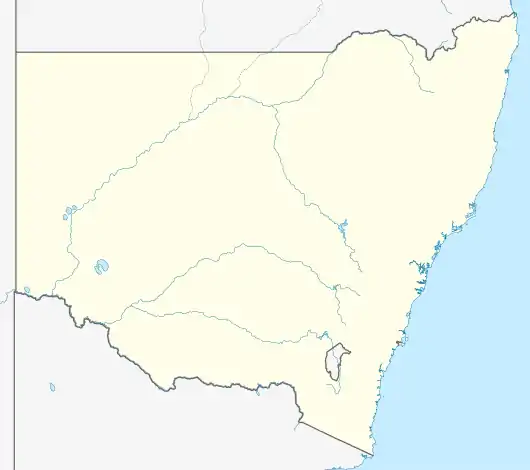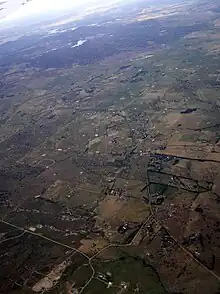| Wallaroo New South Wales | |||||||||||||||
|---|---|---|---|---|---|---|---|---|---|---|---|---|---|---|---|
 Church of St Sava at the New Kalenich Monastery, Wallaroo | |||||||||||||||
 Wallaroo | |||||||||||||||
| Coordinates | 35°08′08″S 149°00′38″E / 35.13556°S 149.01056°E | ||||||||||||||
| Population | 707 (2011 census)[1] | ||||||||||||||
| Postcode(s) | 2618 | ||||||||||||||
| Elevation | 598 m (1,962 ft) | ||||||||||||||
| Location | |||||||||||||||
| LGA(s) | Yass Valley Shire | ||||||||||||||
| County | Murray | ||||||||||||||
| Parish | Wallaroo | ||||||||||||||
| State electorate(s) | Goulburn | ||||||||||||||
| Federal division(s) | Eden-Monaro | ||||||||||||||
| |||||||||||||||

Wallaroo is a rural locality in New South Wales close to the Australian Capital Territory. It lies north of the Australian Capital Territory border, north west of Hall, west of the Barton Highway, and east of the Murrumbidgee River. It is approximately 19 kilometres north-west of the Australian city of Canberra.[2] At the 2016 census, it had a population of 707.[1]
The cadastral unit in the area is known as Wallaroo Parish.[3] Between 1981–1990, the Serbian Orthodox Church constructed the St. Sava monastery at Wallaroo. Established as the headquarters of the Serbian Orthodox Eparchy of Australia and New Zealand, the church is modeled on the Kalenić monastery in Serbia, built in the 15th century.[4]
References
- 1 2 Australian Bureau of Statistics (27 June 2017). "Wallaroo (NSW)". 2016 Census QuickStats. Retrieved 22 July 2017.
- ↑ "Wallaroo". Geographical Names Board of New South Wales. New South Wales Government. Retrieved 22 July 2017.
- ↑ http://nla.gov.au/nla.map-gmod83 map of area
- ↑ "Saint Sava Monastery - Church "New Kalenich"". Retrieved 25 January 2015.
External links
![]() Media related to Wallaroo, New South Wales at Wikimedia Commons
Media related to Wallaroo, New South Wales at Wikimedia Commons